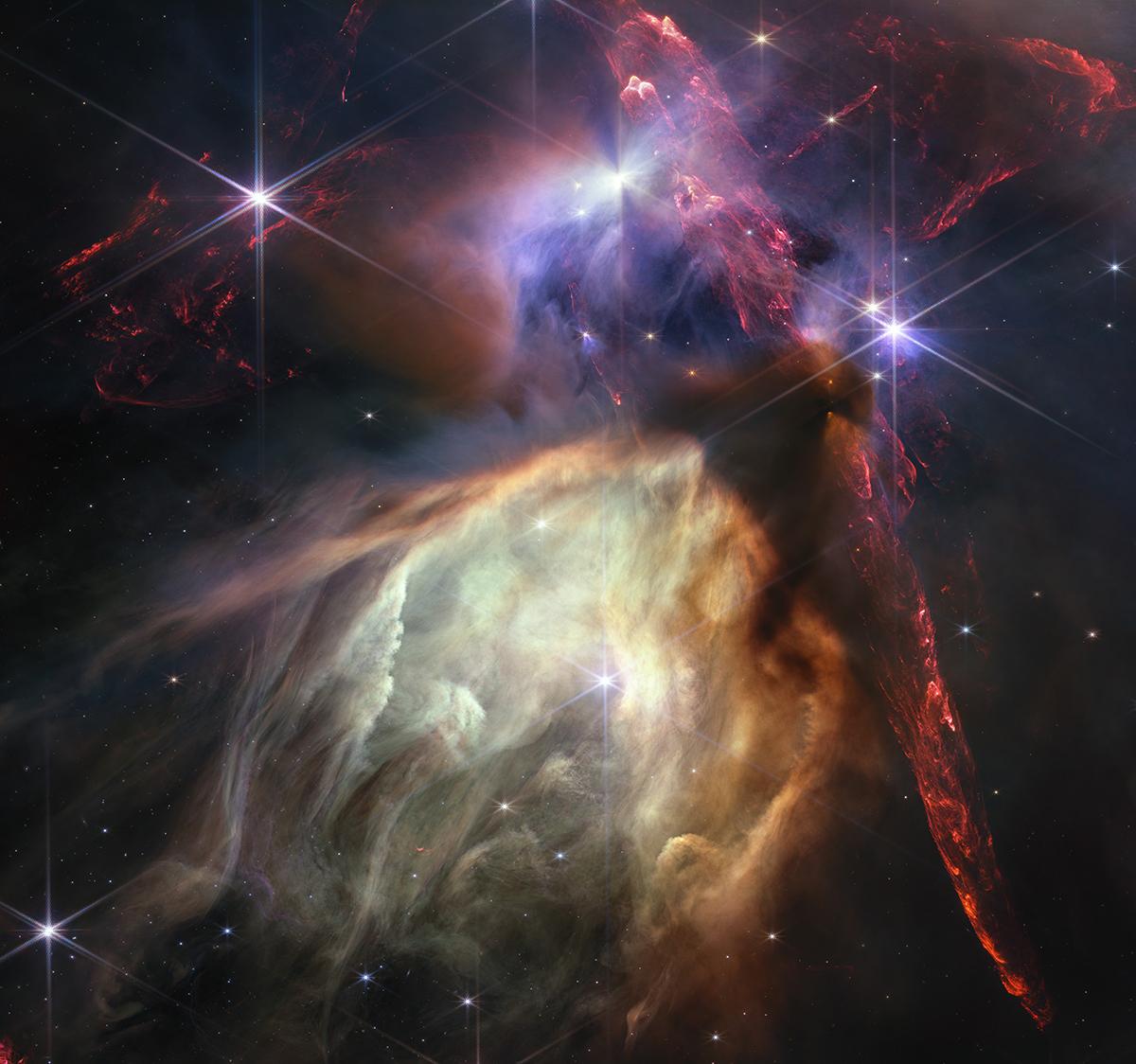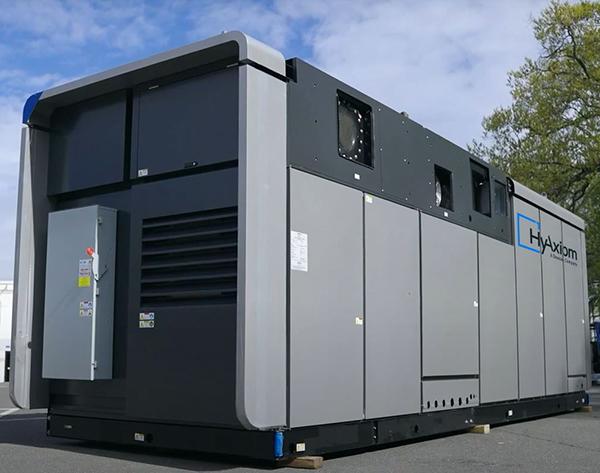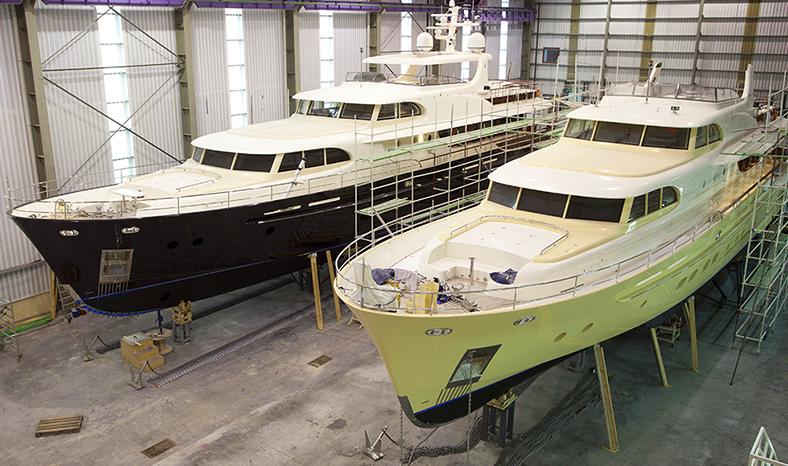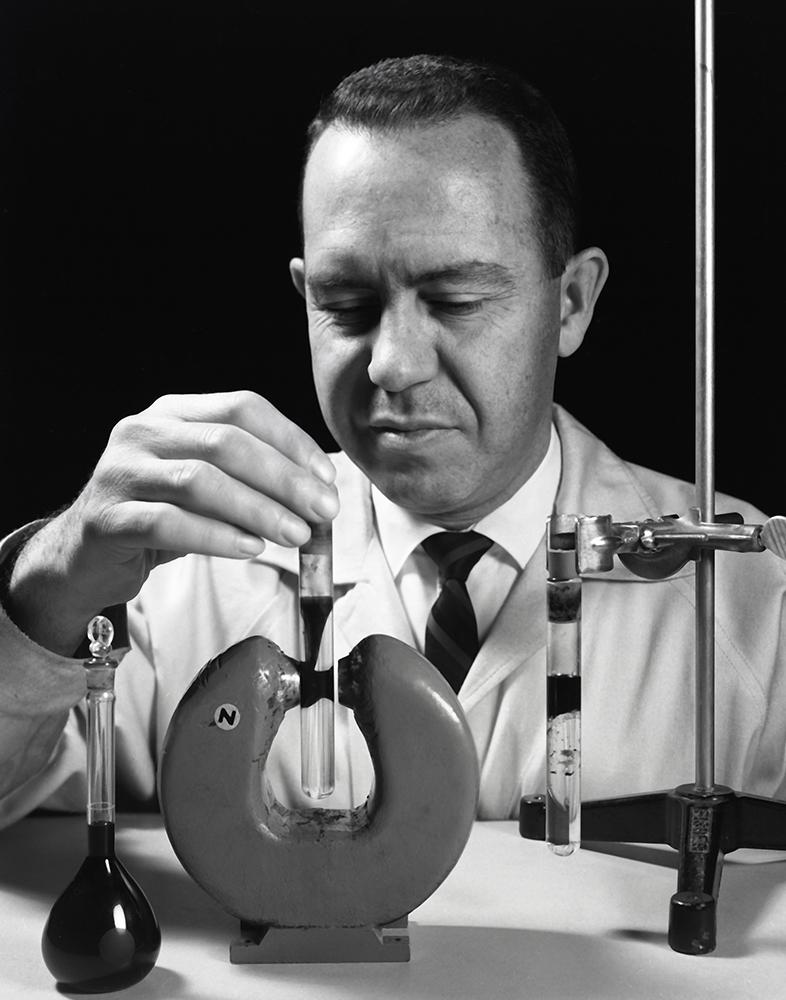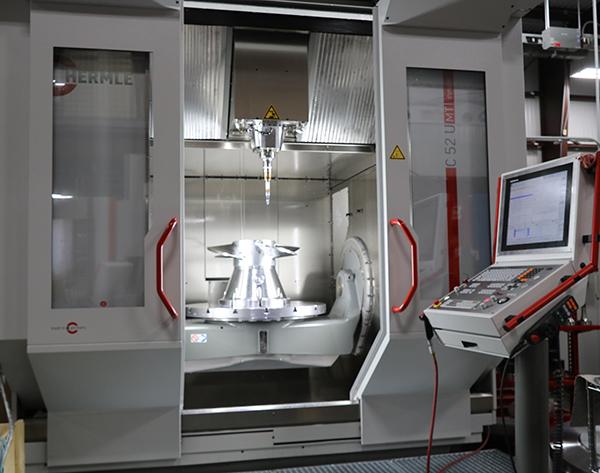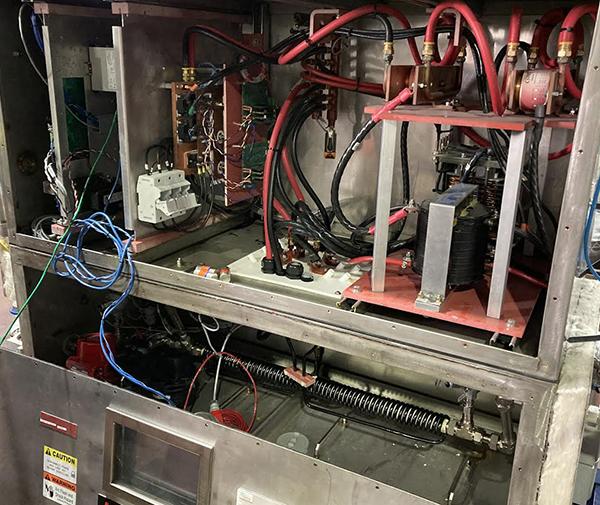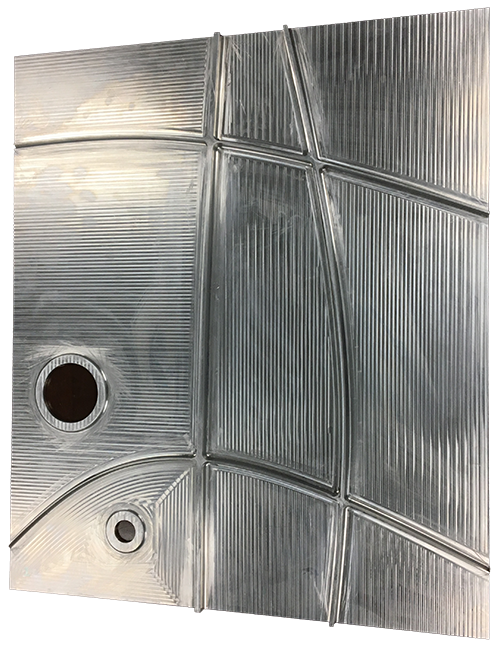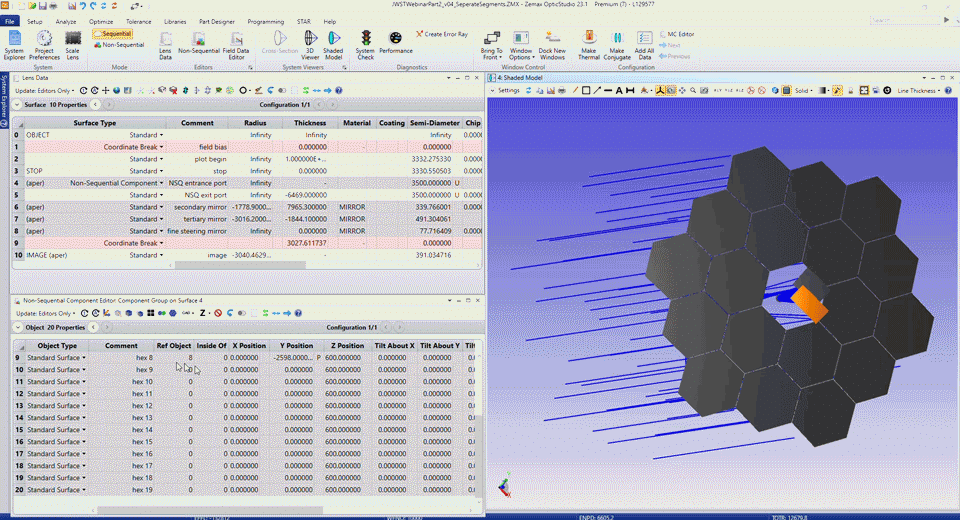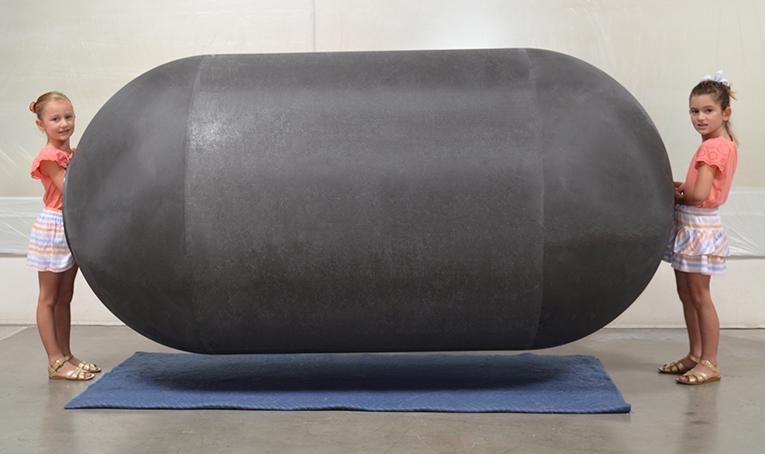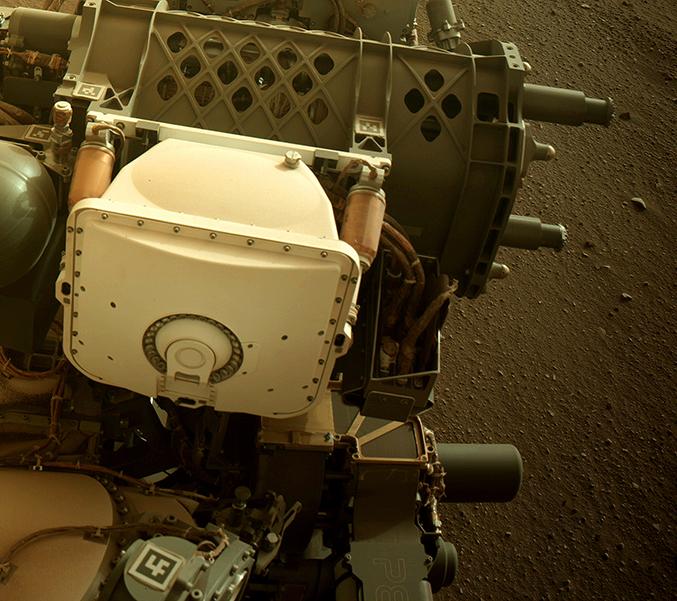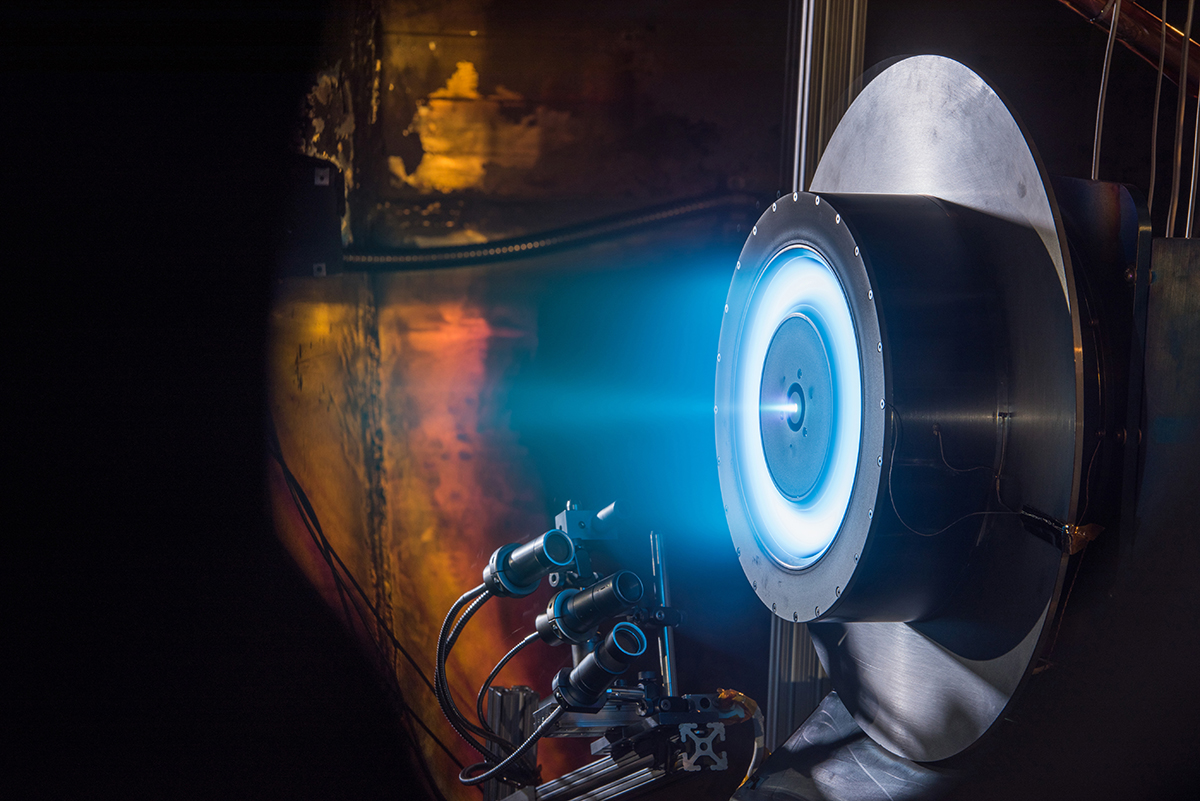
Ion Thrusters Keep Satellites Going and Going
Subheadline
NASA electric thruster expertise, data keeps commercial satellites on the clock
Much like groceries, satellites have a shelf life.
In low-Earth orbit, satellites are subjected to a miniscule amount of atmospheric drag that, over time, causes them to slow down and decays their orbit. Thrusters are used to boost orbits so the satellites can stay in space. But when they run out of fuel, the drag adds up, and the satellite will eventually re-enter the atmosphere.
While necessary to ensuring these satellites stay up for years, most of these thrusters use chemical propellants, which are heavy and require a lot of storage space. But a company from the Upper Peninsula of Michigan seeks to solve this problem with the help of a technology that NASA has been honing.
Orbion Space Technology of Houghton, Michigan, was founded in 2016 by Brad King and Jason Sommerville, both of whom had prior experience working on projects at or funded by NASA. The two saw a market for ways to make satellites either last longer in orbit or carry more payload than fuel. Meeting this challenge required a thruster that doesn’t need much fuel at all.
Hall-effect thrusters, one type of ion thruster technology, use electricity rather than chemical reactions to propel spacecraft. Hall-effect thrusters use the charge of an electric field to accelerate a gaseous propellant, most commonly a noble gas like xenon. NASA has used ion thrusters for a handful of interplanetary missions, such as the Dawn spacecraft that visited Ceres and the Double Asteroid Redirection Test (DART) mission to impact an asteroid. Orbion’s founders saw the technology grow from an experimental concept to being regularly used on missions around the solar system, but for the company to make these thrusters viable for satellite operators, they had to turn to the experts.
NASA’s Glenn Research Center in Cleveland has had an in-depth role developing ion thrusters for the agency’s science missions, designing and evaluating the thrusters for the Dawn and DART missions, as well as working on improving the technology in general. Orbion entered into a Data Usage Agreement with Glenn to receive detailed information from the development of these engines, as well as a non-exclusive evaluation license. One of the reasons Orbion turned to NASA was the agency’s advancements in materials research for ion thrusters as well as the cathode heater Glenn developed, which improves electrical efficiency and operating life.
“We started with discussing heaters, but there have been other discussions looking at more aspects that they can utilize,” said Timothy Verhey, aerospace scientist in the Electric Propulsion Systems Branch at Glenn. “In many ways we become keepers of knowledge for a lot of companies.”
Over the course of the agreement, Orbion’s team had many interactions with researchers at Glenn. This included both direct technical assistance and some field trips to the center.
“We’ve been invited down there to see them build up complex components and take some notes on how they were configuring their systems,” said Jason Makela, vice president of engineering at Orbion. “We can also pick up the phone and call someone there, and they’ll nerd out.”
The end result is that Orbion’s thrusters, branded under the name Aurora, are just as capable as the ones NASA builds for deep space missions, with very high delta-v and specific impulse, measurements of how much effort it takes to change velocity, as well as thrust efficiency. Orbion’s product is also highly configurable, ensuring it can be tailored to whatever a satellite needs to stay in orbit.
Orbion has sold several of the Aurora thrusters, both to the government and private sector companies. Recently, the company entered into a contract with a large commercial satellite operator to provide ion thrusters for its new constellation of Earth-observing spacecraft. Makela said without the wealth of NASA experience leveraged both inside and outside the company, Orbion wouldn’t have been able to get to where it is today.
“It’s great to be on a first name basis with these subject matter experts,” Makela said. “We were really able to stand on the shoulders of giants here.”
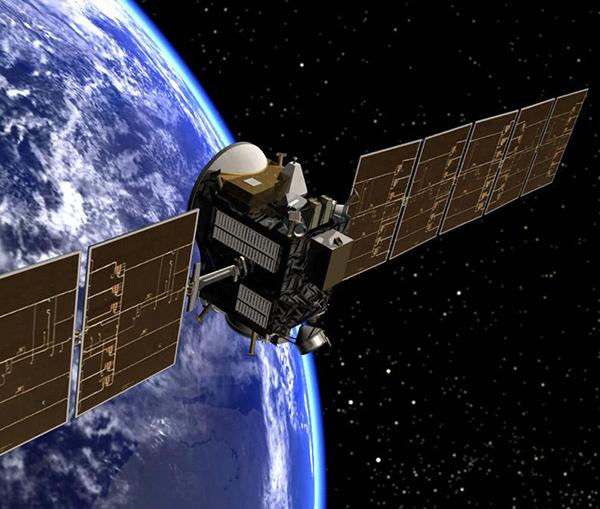
NASA’s Dawn spacecraft used a high-efficiency ion thruster to visit Ceres and Vesta in the asteroid belt. This electric method of propulsion is now being manufactured for small satellites by Orbion Space Technology. Credit: NASA
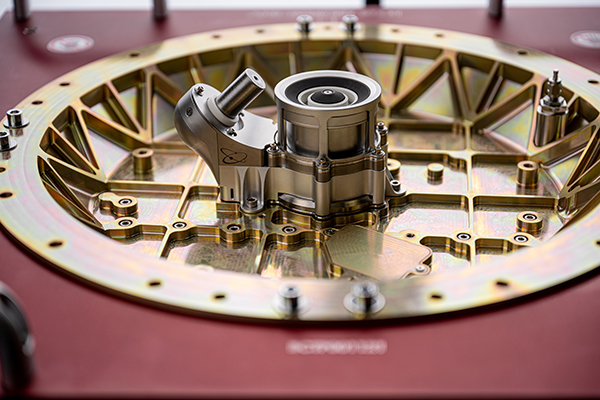
Orbion’s Aurora thrusters are small and efficient yet powerful enough to maintain the orbits of small satellites for several years. Credit: Orbion Space Technology Inc.

This Hall-effect thruster, shown being tested at Glenn Research Center, turns electricity and inert gas into force that could propel a spacecraft. Orbion Space Technology was founded to bring the high efficiency of these thrusters to small commercial satellites, and the company sought the center’s help to make that a reality. Credit: NASA




